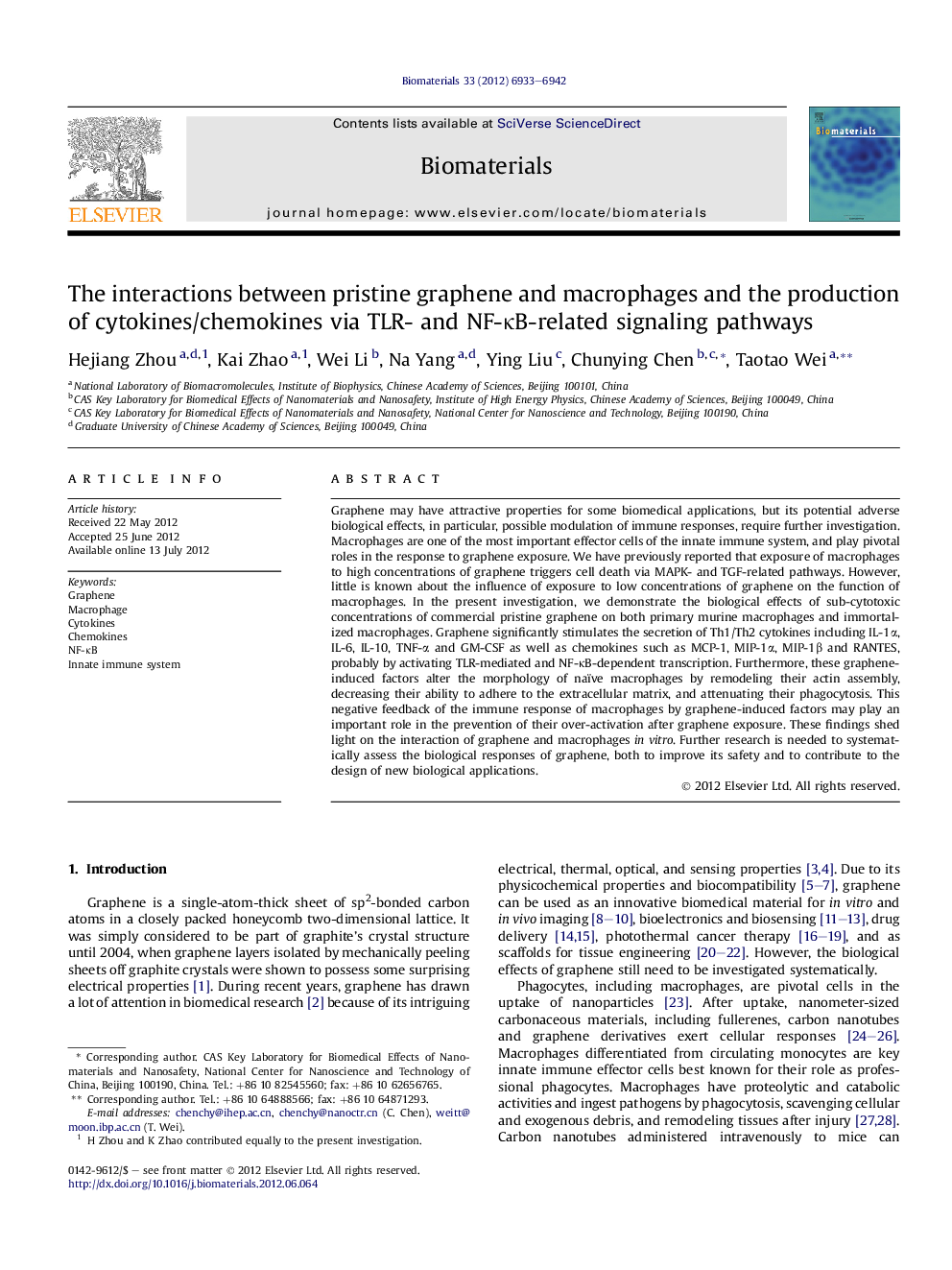| Article ID | Journal | Published Year | Pages | File Type |
|---|---|---|---|---|
| 10228770 | Biomaterials | 2012 | 10 Pages |
Abstract
Graphene may have attractive properties for some biomedical applications, but its potential adverse biological effects, in particular, possible modulation of immune responses, require further investigation. Macrophages are one of the most important effector cells of the innate immune system, and play pivotal roles in the response to graphene exposure. We have previously reported that exposure of macrophages to high concentrations of graphene triggers cell death via MAPK- and TGF-related pathways. However, little is known about the influence of exposure to low concentrations of graphene on the function of macrophages. In the present investigation, we demonstrate the biological effects of sub-cytotoxic concentrations of commercial pristine graphene on both primary murine macrophages and immortalized macrophages. Graphene significantly stimulates the secretion of Th1/Th2 cytokines including IL-1α, IL-6, IL-10, TNF-α and GM-CSF as well as chemokines such as MCP-1, MIP-1α, MIP-1β and RANTES, probably by activating TLR-mediated and NF-κB-dependent transcription. Furthermore, these graphene-induced factors alter the morphology of naïve macrophages by remodeling their actin assembly, decreasing their ability to adhere to the extracellular matrix, and attenuating their phagocytosis. This negative feedback of the immune response of macrophages by graphene-induced factors may play an important role in the prevention of their over-activation after graphene exposure. These findings shed light on the interaction of graphene and macrophages in vitro. Further research is needed to systematically assess the biological responses of graphene, both to improve its safety and to contribute to the design of new biological applications.
Related Topics
Physical Sciences and Engineering
Chemical Engineering
Bioengineering
Authors
Hejiang Zhou, Kai Zhao, Wei Li, Na Yang, Ying Liu, Chunying Chen, Taotao Wei,
